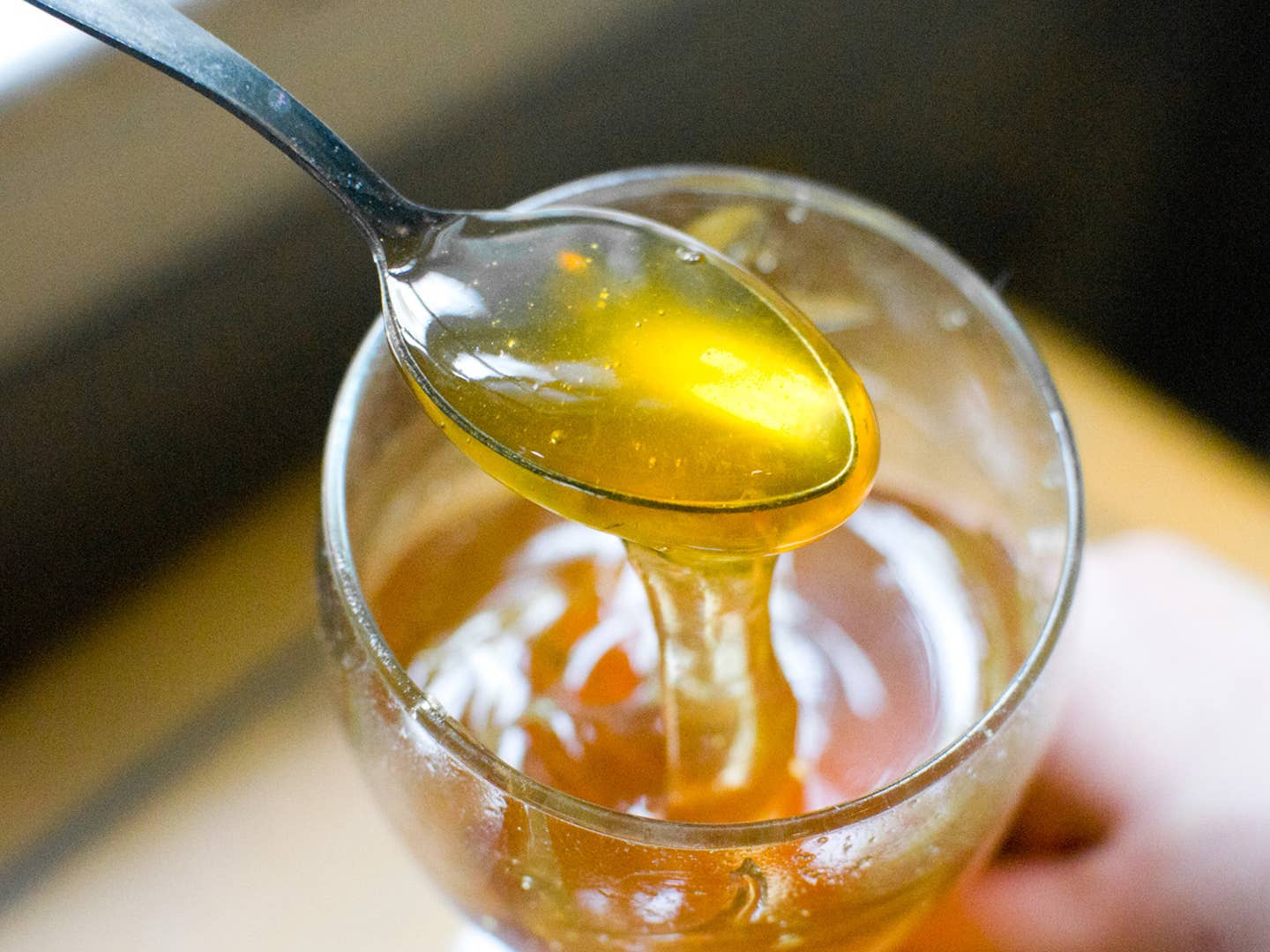
Why South Korea Goes Crazy for Honey
From food fads to historical cooking, this obsession runs deep
When Korea ran out of Honey Butter Chips, people declared war. Executives from snack food company Haiti-Calbee, the masterminds behind this salty-sweet, honey-flavored potato chip, never thought it would go over well, so they didn’t produce a particularly large run.
Boy were they wrong.
The snack's unexpected popularity, and resulting shortage, led to a manic consumer run, with convenience stores penning out the hordes with firm signs declaring, "No Honey Butter Chip left." Leftover bags sold on Ebay for $50 apiece, merely for their sweet scent. The phenomenon coined a name: Honey Butter Yeolpung ("craze" in Korean). Dozens of imitators popped up to fill demand.
So are Koreans really this crazy about potato chips? No—it’s all about honey.
The Korean obsession with honey runs deep. Anything made with honey, or even described as “honey-flavored,” is a marketing shortcut to near-instant success. And though Korea’s honey obsession didn’t make international news before the Honey Chip Incident of fall 2014, the nation has a long history with the sticky sweetener—so precious was honey at one point that it was only fed to royalty.
Korean Rice Cake
Korean rice cakes, known as songpyeon, are half moon-shaped dumplings that are stuffed with fillings like sweet potatoes, chestnuts, red beans, or nuts, and then steamed and served with honey. Get the recipe for Korean Rice Cake »
"Honey was reserved for royals or the higher class [during the Joseon Dynasty, 1392 to 1910], and the theory of exclusivity and class may have tied it to its importance in Korea," says chef David Kang, an expert in Joseon Dynasty cuisine. During that time, not just anyone could go to a market and pick up a jar. The king—and only the king—feasted on a honey dessert known today as Dragon's Beard Candy, a confection a little like cotton candy that used honey to make spun sugar. Court chefs sweetened tart fruit tea omijacha, an important base for Korean punches, with honey. When one of Korea's most important holidays, Chuseok (the Great Mid-Autumn Festival) approached, women prepared songpyeon, small half-moon rice cakes that they filled with sesame and, of course, honey.
Today, Korean honey mania is more democratic, and increased availability, plus the power of viral food fads, means honey is taking stranger and stranger forms. Witness: 7-Eleven’s honey cream cheese latte, or a gorgonzola-topped pizza served with a bowl of honey on the side, or Texas toast-sized honey bread that’s topped with more honey, caramel, and whipped cream. Instead of maple syrup, Koreans top their waffles with a healthy drizzle of honey and a rich, showy dollop of sweet cream.
The Korean love for honey has worked its way into the language itself. A kkul danji is literally a honey container, but it implies "a container for a very valuable item." There's a Korean saying for dishes that taste delicious: "Kkul mat ee da," which literally translates to, "It tastes like honey." Even the onomatopoeic phrase for swallowing, "kkul dduk, kkul dduk," means "honey rice cake, honey rice cake" another prized food.

But the nation’s honey obsession faces an old threat: limited supply. Though 70 percent of South Korea's mountainous land is covered with the flowering plants and trees needed to produce honey, the 35,310 metric tons of honey produced a year aren’t enough to keep up with domestic demand. As cities climb higher and sprawl wider, and more foreign producers enter Korea’s honey market, family-operated farms have scaled down operations. Demand for honey has sparked an intense bidding war among foreign countries hoping to enter the growing market. The United States dominates it, with almost half of Korea’s honey imports, but New Zealand hopes to increase its share by focusing on specialty single-source honeys like manuka flower.
That's why Jin Park, the CEO of non-profit Urban Bees Seoul, is on a mission to remind Koreans of the vital critters that make their honey possible, and why they matter for more than honey-flavored potato chips and waffles. A healthy domestic honey industry means a healthy bee population, and healthy bees are vital to pollinating countless crops that form the backbone of so much of our daily produce.
“Many people think just humans should live here,” Park says. “As a city we’ve borrowed our life from nature. Without bees, many foods we love, from almonds to apples, and of course honey, would disappear. People can’t survive without bees.” Park's team visits schools of all grade levels to educate students about bees and beekeeping. And volunteers work with aspiring urban beekeepers, training them to start colonies near the organization's 16 outlets across the country, all with the goal of encouraging local bee populations.
Yes, Urban Bees sells honey from its own hives. But for Park, that's only an added perk. “Honey is the secondary thing. If it comes out naturally, we sell it. Otherwise, if we don’t make much honey, we let the bees eat it all. Our focus is to make a good environment for the bees to live in, so that people can live well.”
Keep Reading
Continue to Next Story










